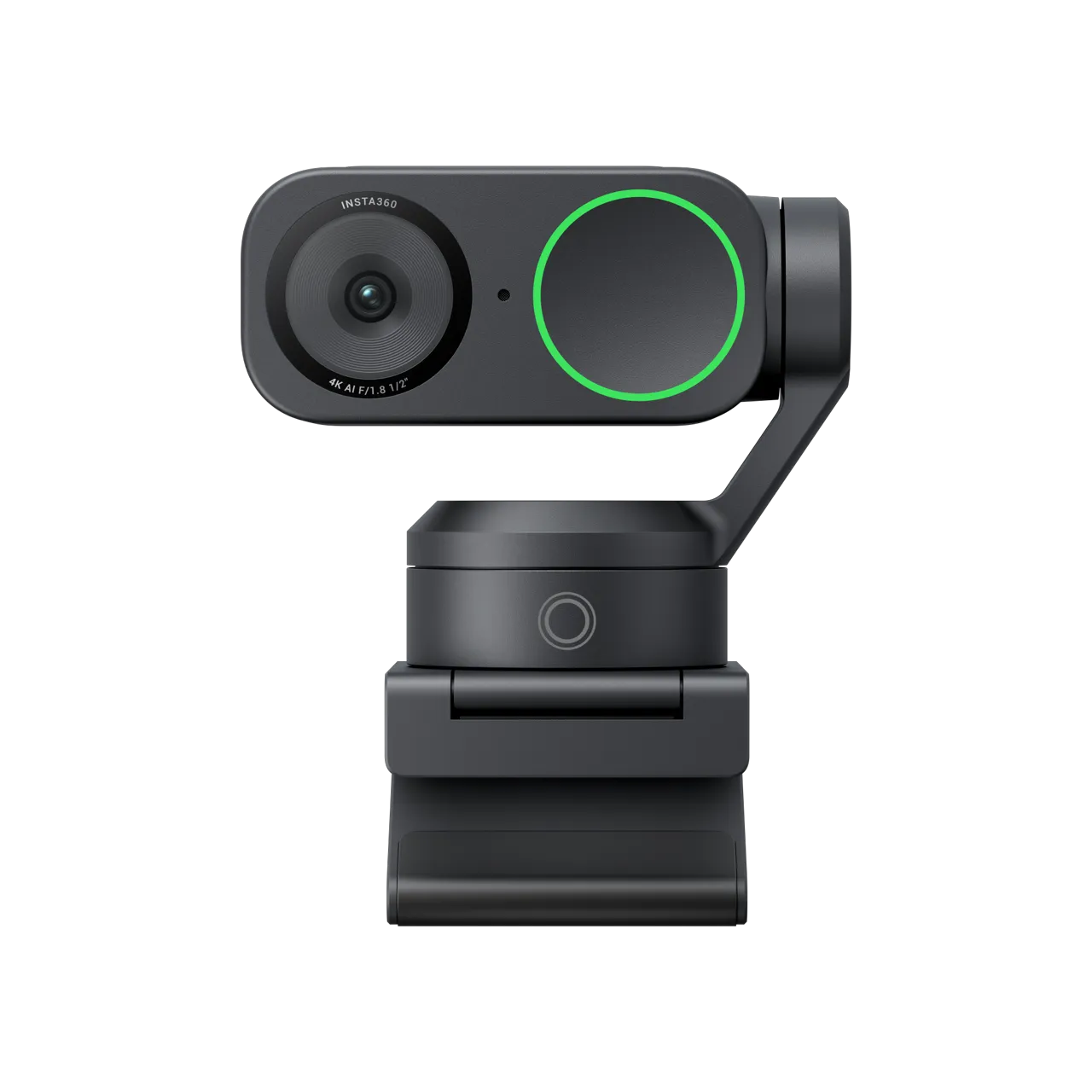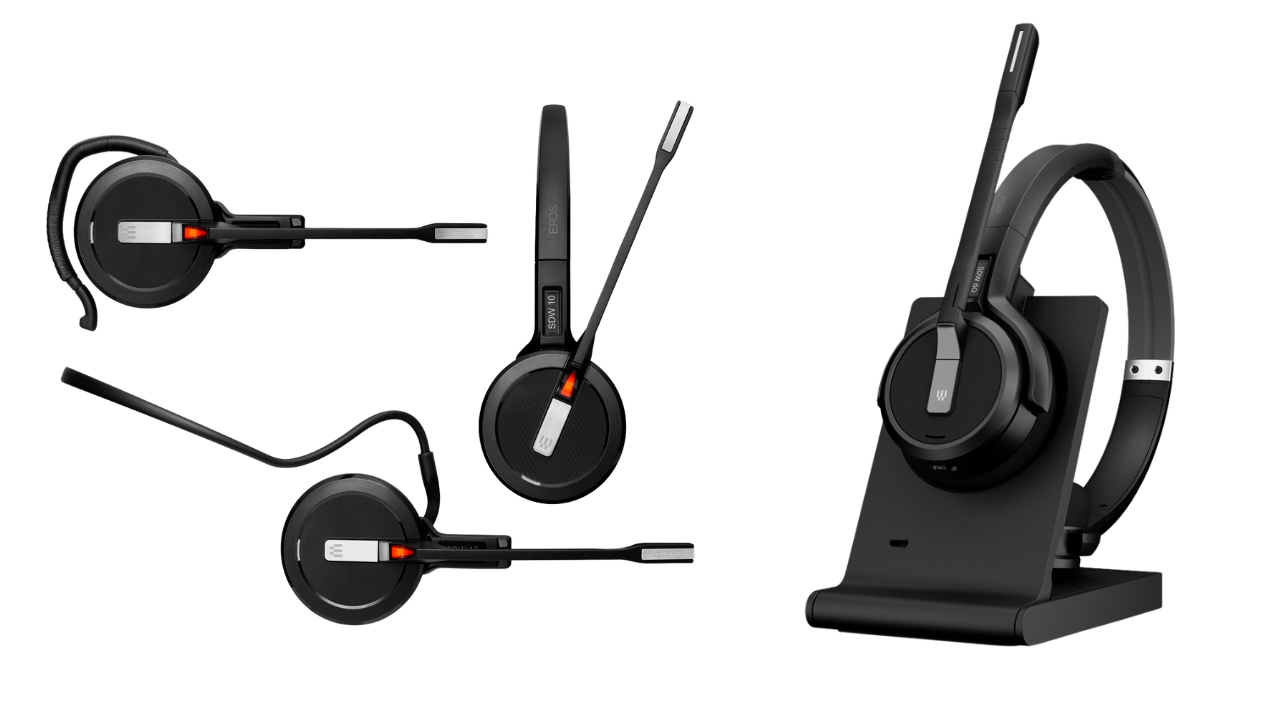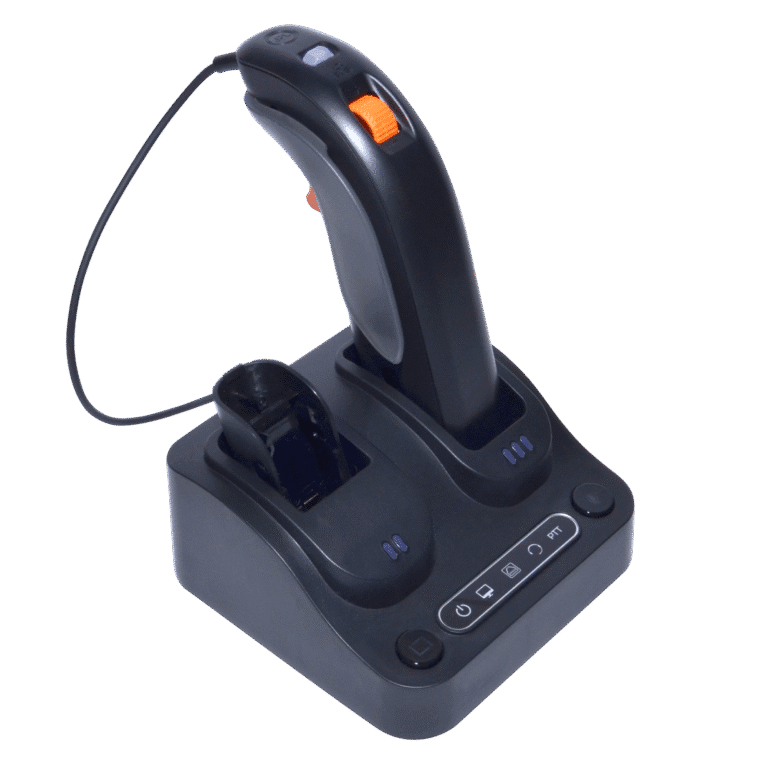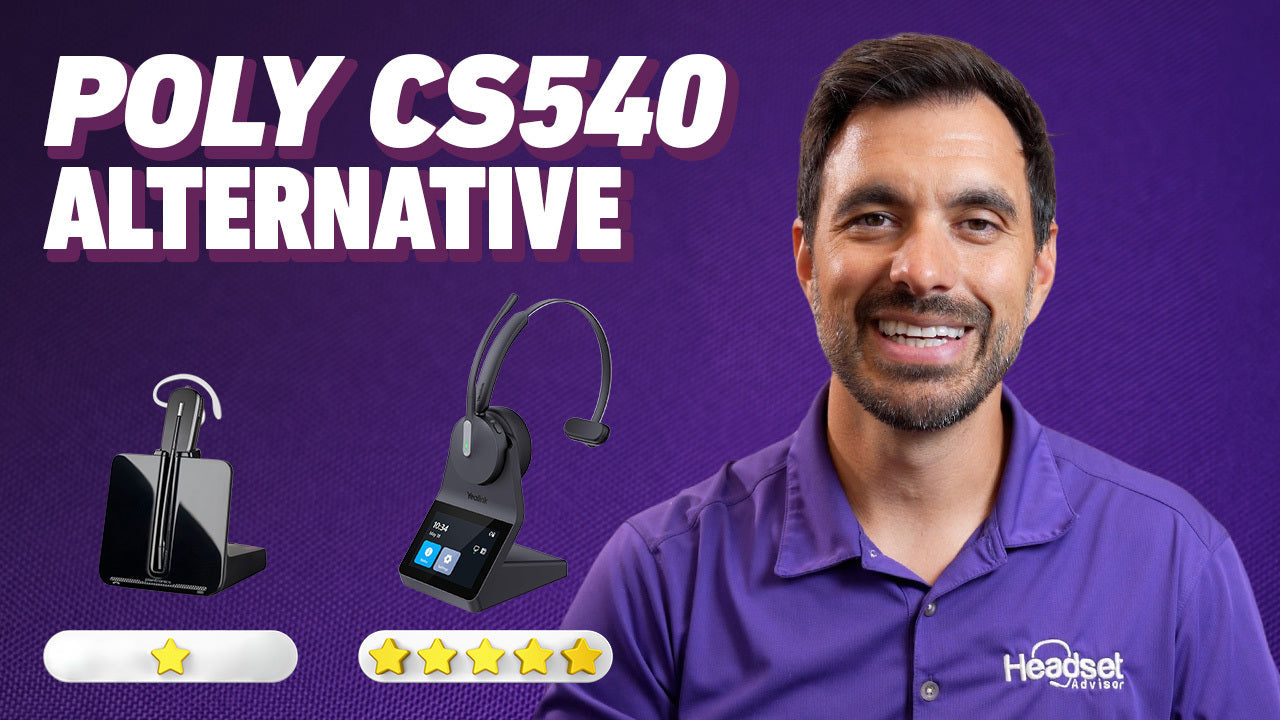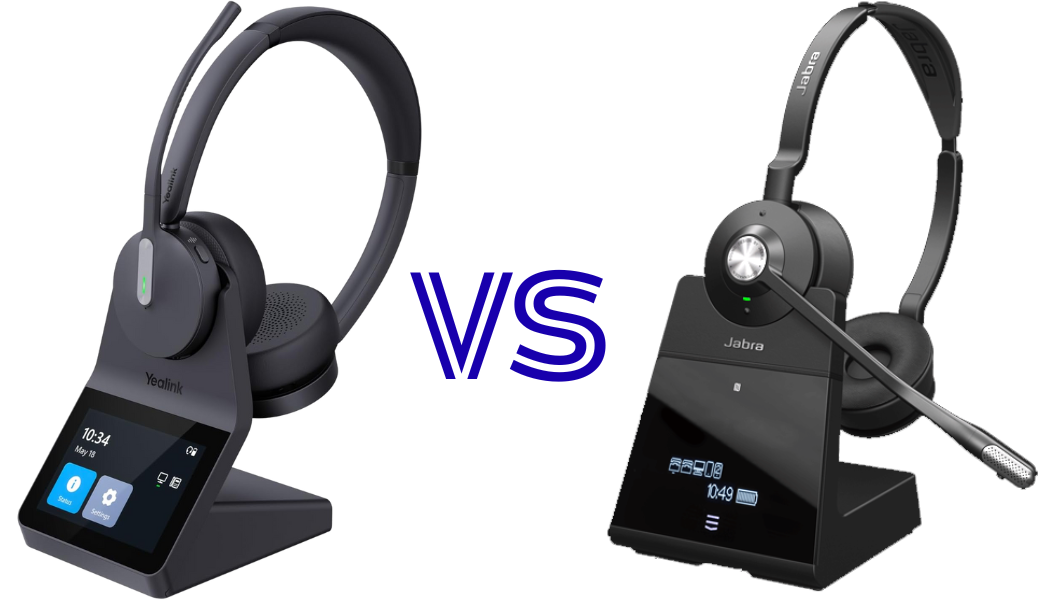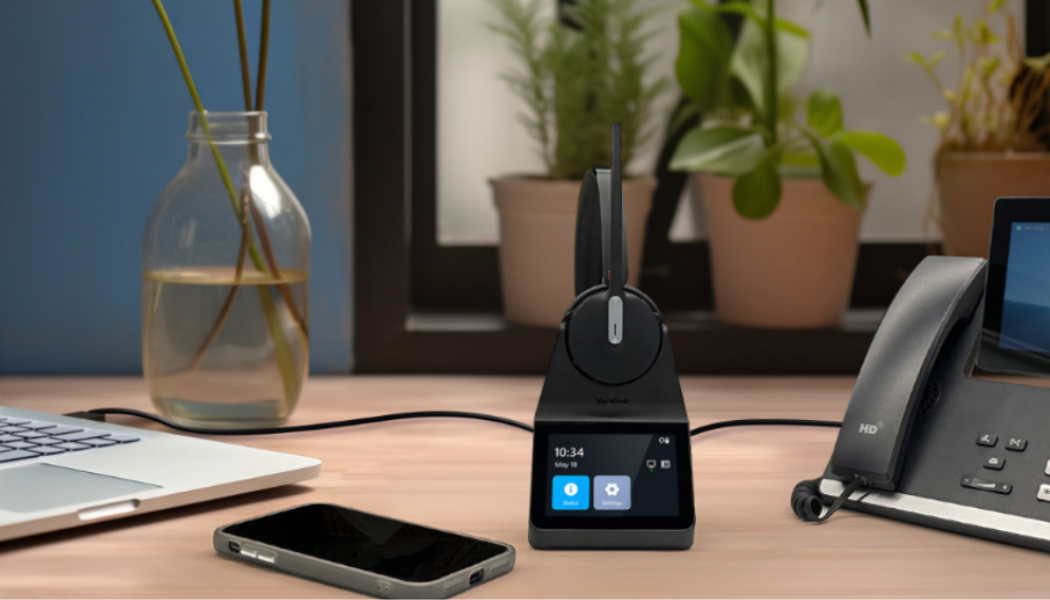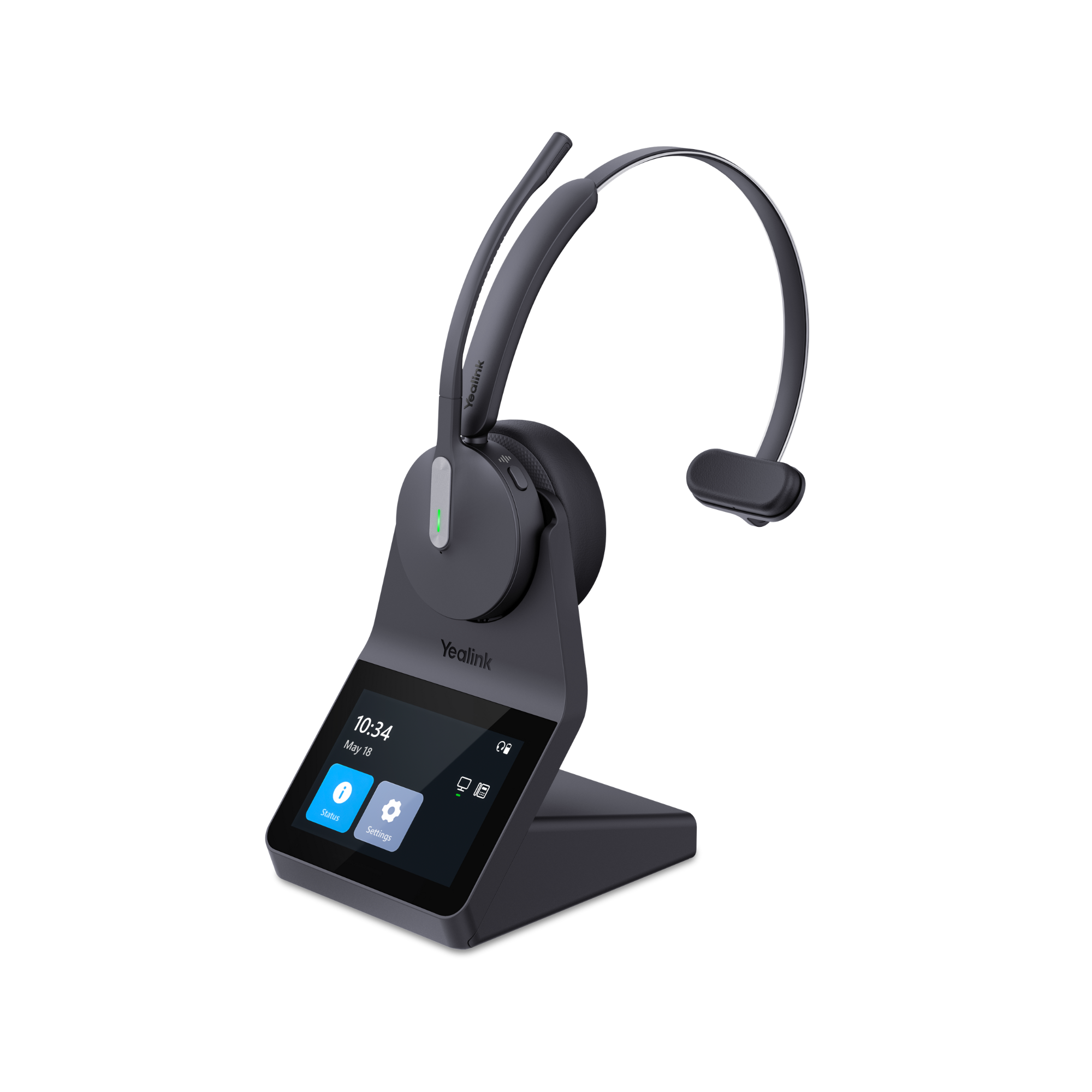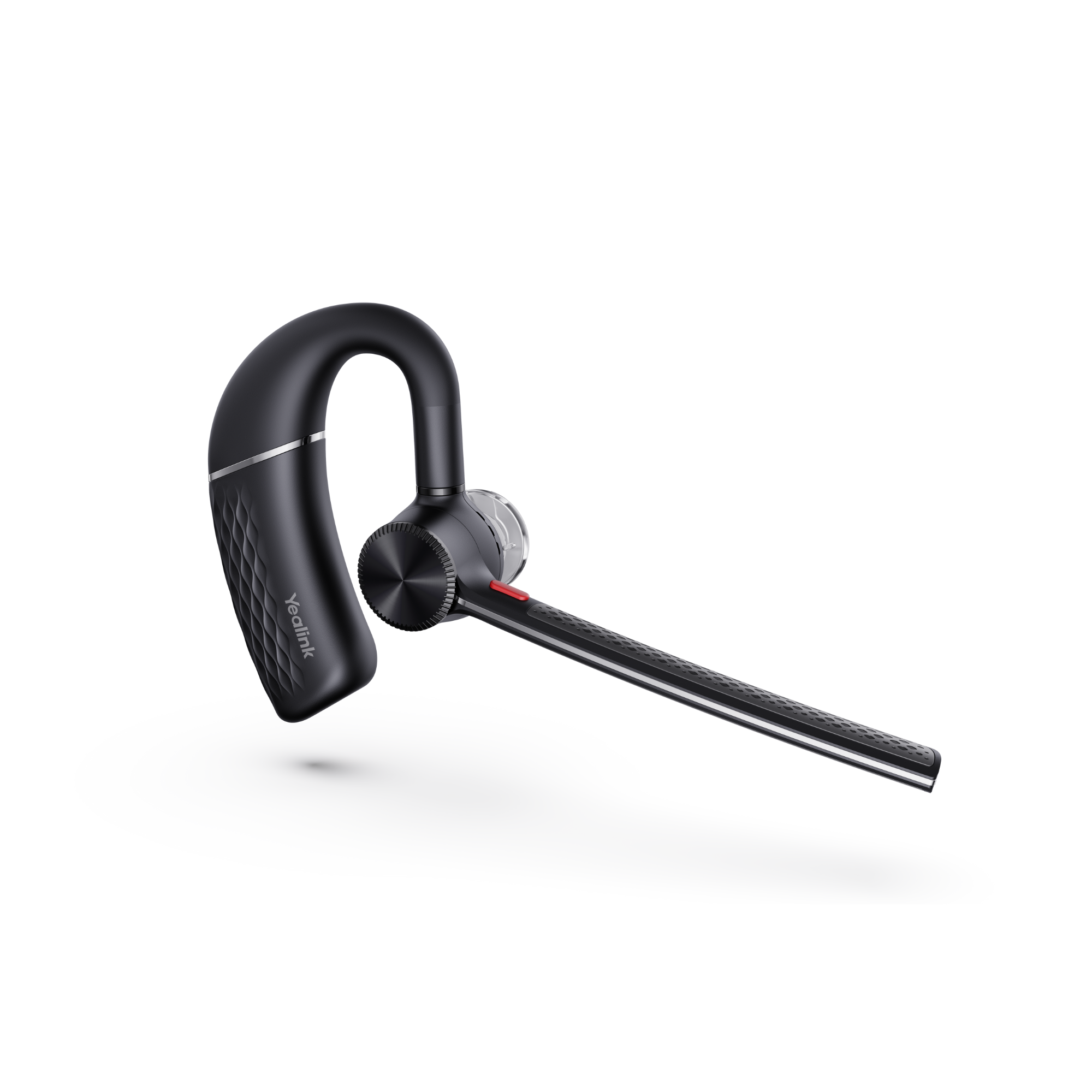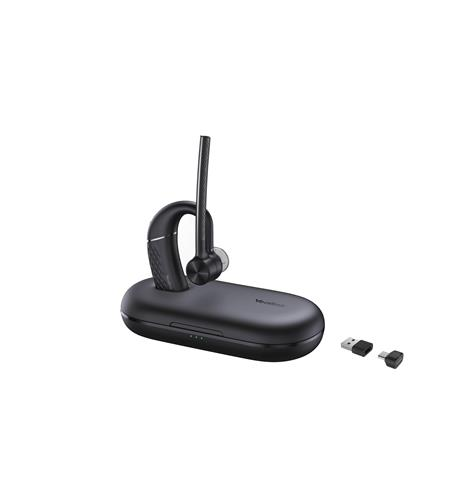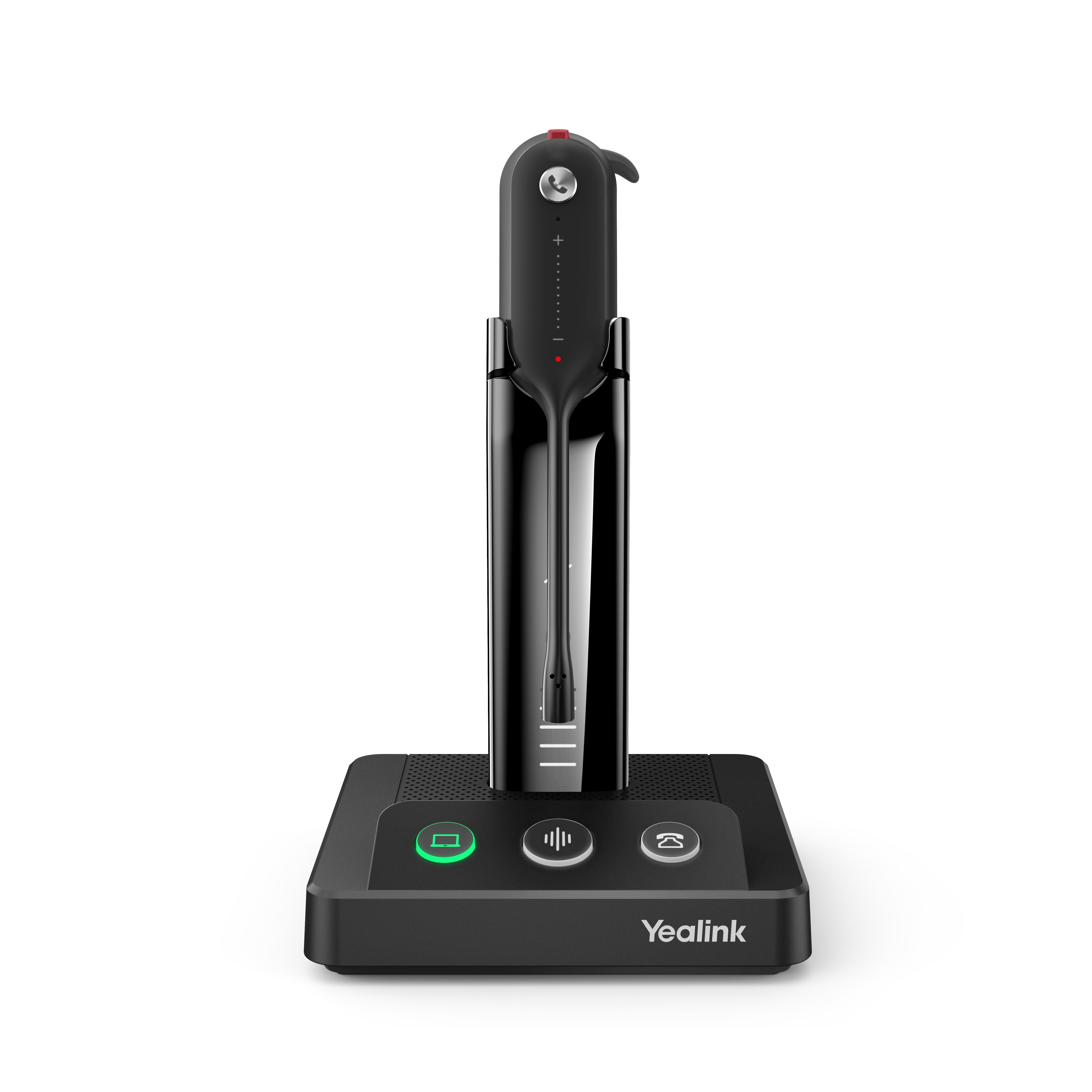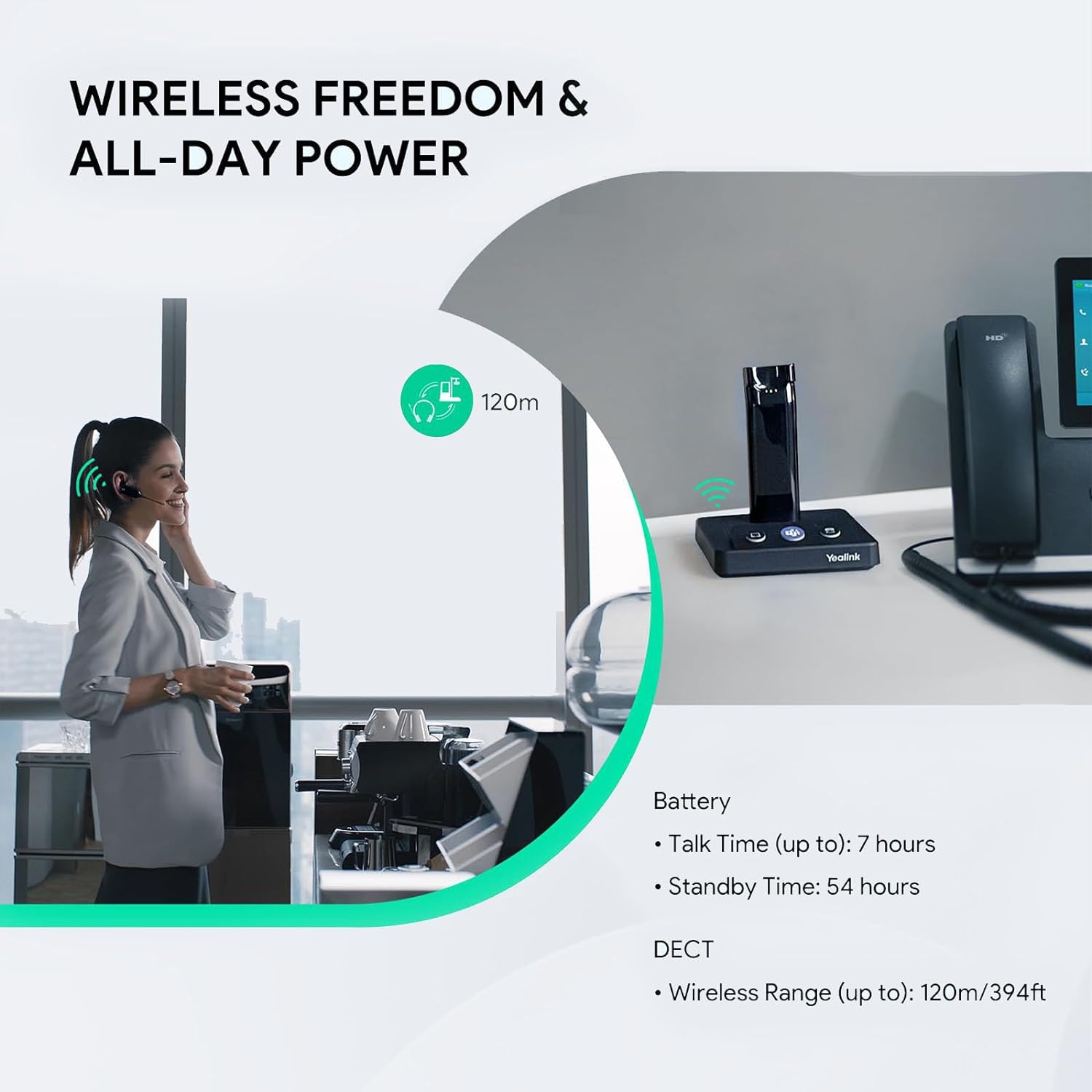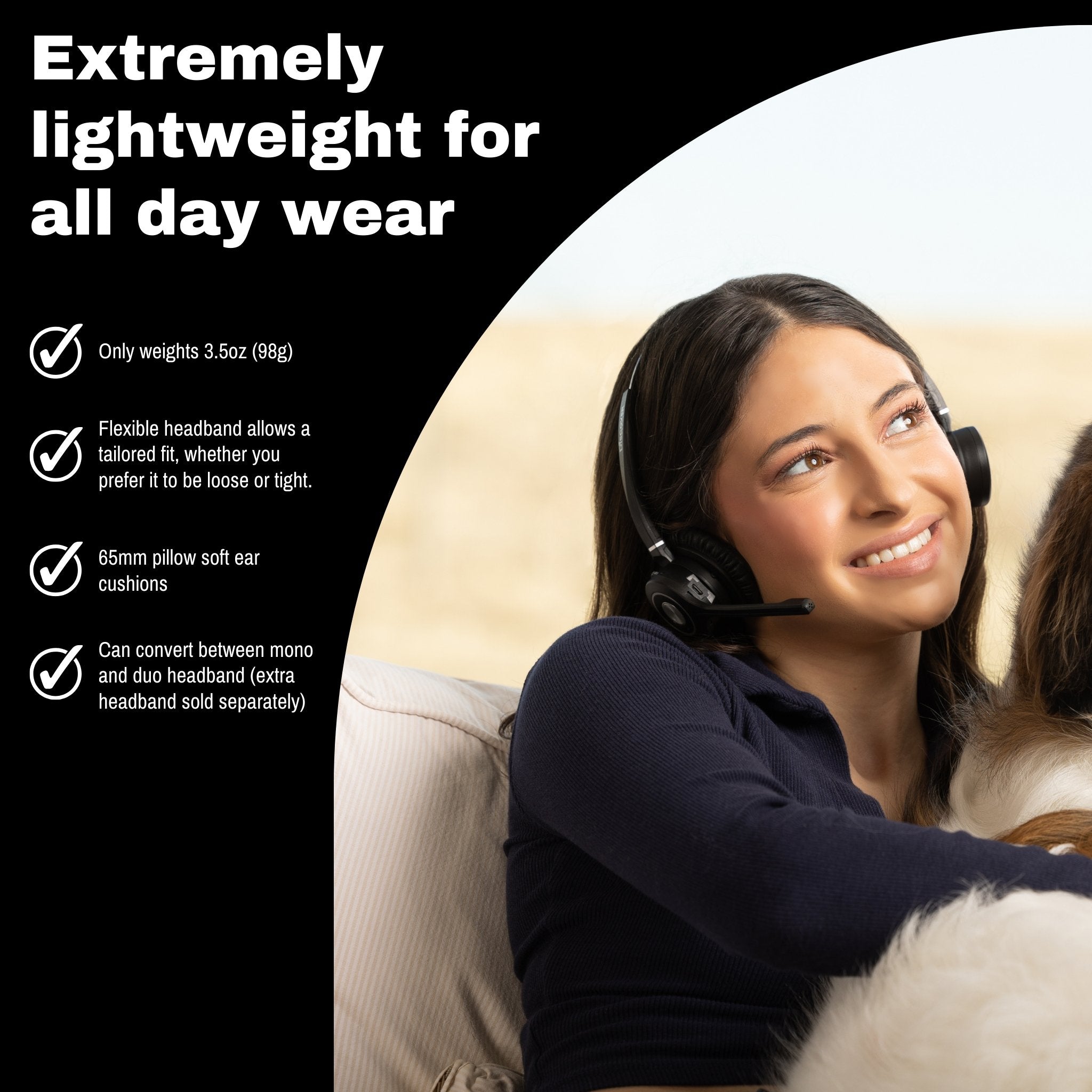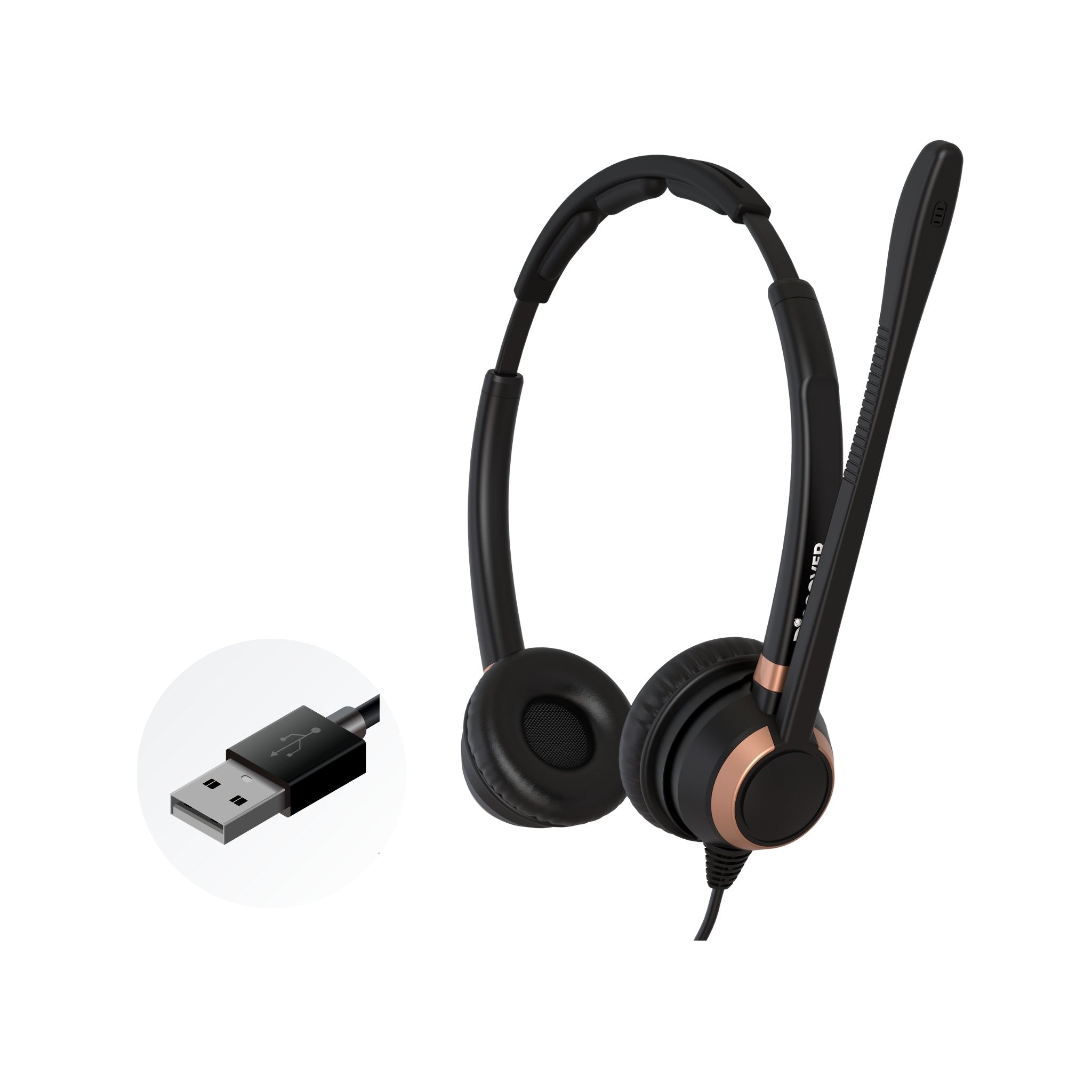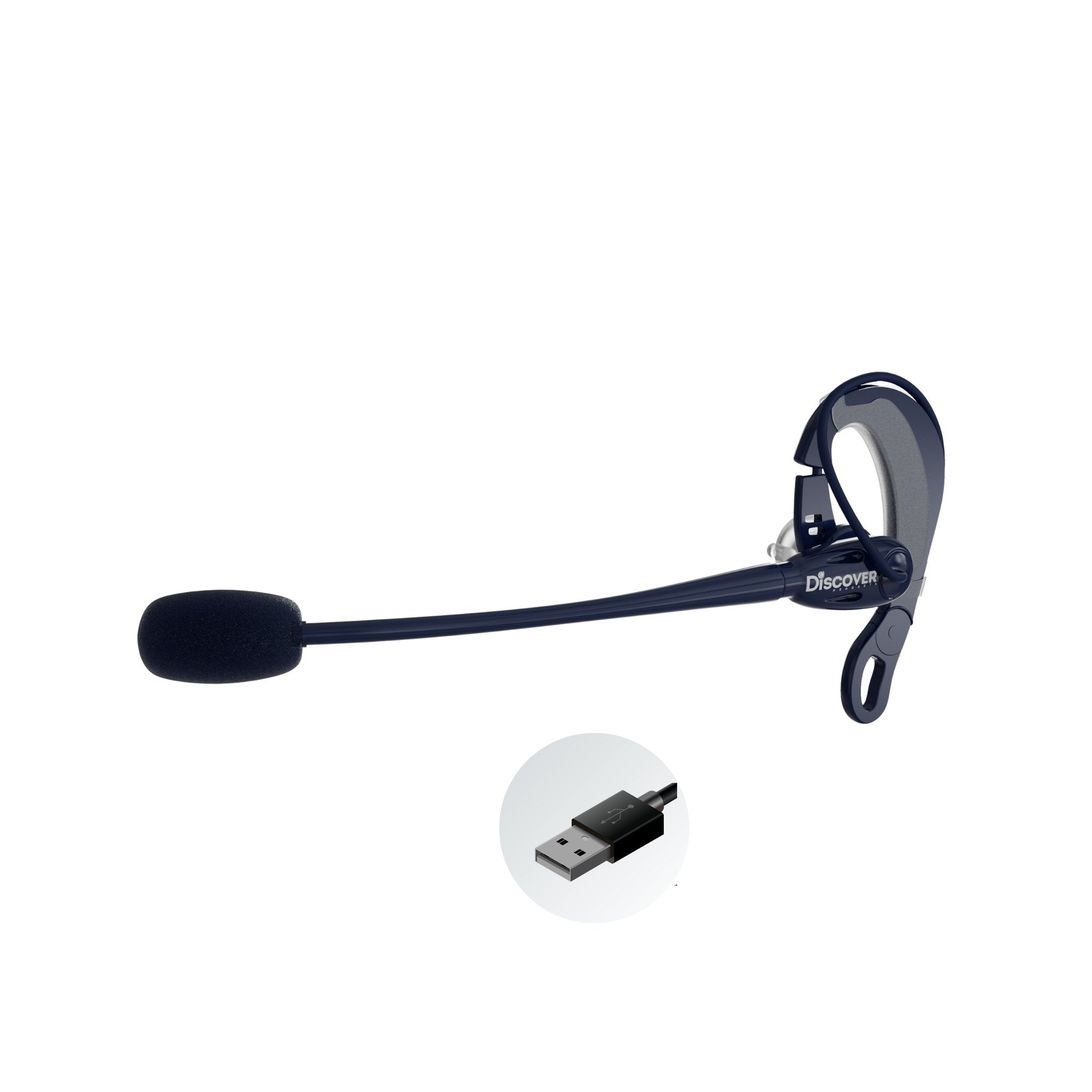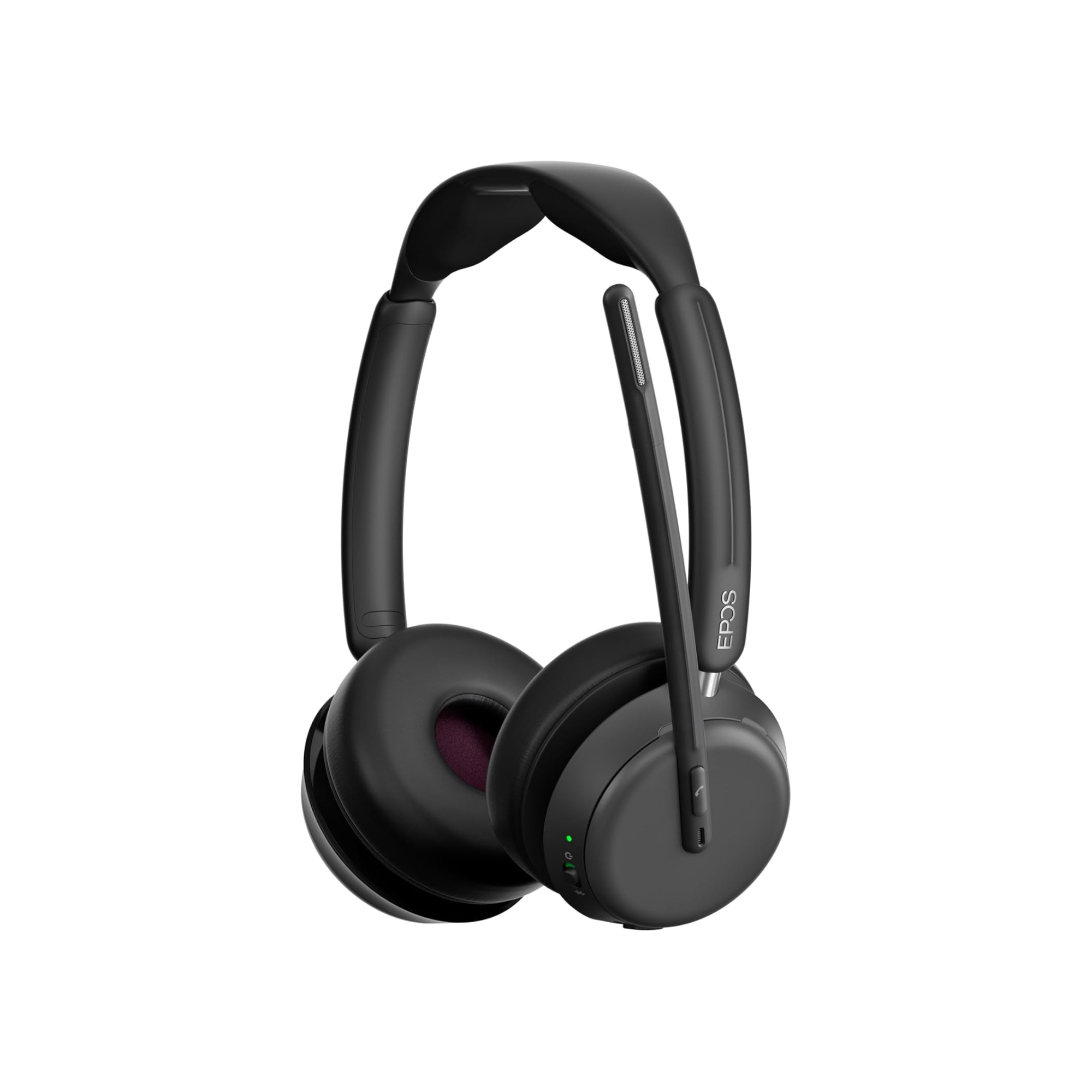Not everyone likes nor appreciates wearing a headset that goes over the head. You might be someone who gets headaches when anything is placed over your head.
Other people might prefer a change of pace now and then instead of being stuck with the same headset, day after day, week after week, and month after month.
You might be a buyer for a team of people who need a headset, but knowing everyone has different preferences, how do you satisfy everyone without surveying the employees and then buying for them individually? What a pain that’d be, right?
The answer to these situations is to purchase a headset that has the ability to change from one wearing style to another.
In this blog, I’m going to provide a review on a new headset that was recently released by EPOS Sennheiser. I’m referring to the EPOS Impact SDW 5011 convertible wireless headset.

Before I start my review, I wanted to mention that I recorded a Youtube video review of the SDW 5011. In it, I unbox it, show you how to change it from one wearing style to another, and finally I do a wireless range test, and microphone test.
If you’d like to watch that video rather than reading this blog, I’ll include it below for easy access. Also, make sure to hit that like, subscribe and/or notification bell so you won’t miss out on all the new content we’re making.
Still with me? Ok, then let's get started on finding out what this new EPOS Impact SDW 5011 wireless headset is all about.
What comes in the box?

When unboxing this headset, you’ll find the USB Adapter in a small box. The only other thing besides a user guide that you’ll find is a padded travel case. In it, is the headset, and the various accessories that go with it. That’s it. No bulky charging base to deal with either.
What is the Impact SDW 5011 headset?
This is a new DECT 6.0 convertible wireless headset designed for use with your PC or Laptop computer. Unlike other Bluetooth headsets, this model doesn’t connect via Bluetooth, and it doesn’t work with mobile phones and tablets. It’s designed to work with your computers.
If it doesn’t connect to mobile phones or tablets, why is this a notable new product?
The SDW 5011 comes with a DECT USB Dongle/Adapter so the wireless headset can be used for Softphone calls, or video calls using a wide variety of software applications such as Zoom, Microsoft Teams, Google Meet etc. And, with more and more people working from home, there’s been a huge rise in the use of applications like these. This means that the demand for USB headsets has risen dramatically.
Today, more and more people have steered away from using traditional desk phones, and have opted to employ the use of Softphones instead.
This means that your phone is housed in your computer, and that telephone handset you once used may soon become a relic. Instead, headsets are now being used in tandem with computers more so than phones. At least that’s the trend at this time. The SDW 5011 can play an important role in helping to carry out your daily business communications.
By the sheer fact that the SDW 5011 uses DECT technology, you have some inherent advantages over those models using Bluetooth technology. Some of these points I’ll touch on here in this blog.
Traditionally, DECT headsets have been widely used for use with desk phones, not computers. Computer headsets have been dominated by Bluetooth models. So, when you compare a computer Bluetooth headset to one that uses DECT, you have some advantages such as longer wireless range and a more stable connection for a more reliable audio experience.
A wearing style for everyone

Unlike your typical headset that comes pre-configured in a single wearing style, the EPOS Impact SDW 5011 includes three uniquely different wearing styles. This means that you can select the wearing style you prefer among the three available choices, which are:
- Over the head, covering one ear (mono style)
- Behind the neck with the included lightweight neckband
- Over the ear with an ear loops that’s bendable to mold to your ear for a snug fit
As noted earlier, not everyone can, or wants to wear a headset that’s worn over the head. For those individuals, they could consider the earpiece or neckband options included with the SDW 5011. This way, they won’t end up messing up that perfectly styled hair, or worse yet, end up with a migraine headache. Perish the thought.
For the Buyer who’s buying for a team, the EPOS Impact SDW 5011 makes sense and also makes for a simplified buying decision. You don’t have to worry about getting different headsets for everyone based on their preference. They simply choose one of the three included wearing styles, or change it up periodically whenever they like. Problem solved!
All three wearing styles are surprisingly comfortable. The on-ear version weighs a meger 1.55 ounces which places it among the lightest headsets we’ve reviewed. When it comes to on-ear headsets, weight really matters because you don’t want something heavy resting on your ear.
The headband and behind the neckband options were also very comfortable. I tried them all, and in both cases, they were not only easy to switch over to, but once worn, they felt light and extremely comfortable. I have to say, not all headsets give you that level of comfort.
Wireless range
I found a few mentions in the EPOS product description about wireless range. One states a range estimate up to 590 feet (180 meters). I also saw another that mentioned line of sight at 135 meters, or 442 feet. Lastly, I saw mention of 40 meters, or 131 feet. Based on all this, I’m uncertain what the actual expectation should be for the range you should expect.
At least, the range that’s based on the manufacturers estimation. For sure EPOS understands the idea that line of sight range estimates differ from those in an actual office environment. Nonetheless, we did our own range test, albeit, an informal one. Here’s what we got.
About 120 feet (about 36 meters). Though we didn’t hit any of the range estimates provided by EPOS, 120 feet is two to three times the range you’ll get using a Bluetooth wireless headset. Keep in mind that this range figure was based on our test. Your test could produce more, or even less, depending on your environment. So keep this in mind whenever you’re looking at range figures for any wireless headset.
How does the SDW 5011 do for music?
The short answer is not all that good. But, before we start EPOS bashing here, you’ll want to keep in mind that this wireless headset isn’t designed for that purpose (listening to music with the highest of quality). Can you listen to music and movies etc? Of course you can, but compared to media type headsets, you’ll come away disappointed if you were to compare.
So, for music and the SDW 5011, I won’t attempt to compare it to any other headset. Instead, I’ll simply say that this isn’t a good choice if music and media is high on your list of headset priorities.
Microphone sound quality
Given that this headset is designed to be used in a business setting, it’s worth exploring how it sounds. After all, you do want to sound great on your Softphone calls and video meetings, right? Sure you do, so let’s see how the EPOS SDW 5011 did when I tested it out.
In my test, I spoke normally, with no background noise. This would simulate someone working in a quiet environment. I also tested it with office noise (people talking, machines running etc), and I had Spot the wonder dog bark a few times for us which might replicate working from home.
Lastly, I put it up against the dreaded blender test where I placed a blender about arms length from me, and then fired it up on high.
How’d well did the SDW 5011 block out the noise of a blender?
Voice quality in a quiet room - Great! The audio quality was fantastic. Rich sound, clear, crisp and very professional.
Voice quality with office sounds, Spot the wonder dog, and the dreaded blender - If you didn’t talk, the degree of noise reduction was impressive. However, once you start talking with that noise taking place around you, I noticed some voice clipping with a bit more of the background noise detectable. That wasn’t the case when there was no
active conversation taking place. This isn’t to say that it sounded poorly when it was up against challenging noise. My voice was very legible, but I did notice a difference. If you watch my video on this, you can hear for yourself and make the determination if I heard this right or not.
Narrow & wideband modes
The EPOS Impact SDW 5011 gives you the option to use it in narrowband, or wideband modes. This allows you to regulate the level of audio quality. It would be normal to always select wideband mode for the best possible audio, but something to keep in mind here is when setting it to wideband, it does deplete your battery about 20% faster than when using the headset on narrowband.
Some claim there’s little difference between these two modes. To me, some do sound better, while other models sound similar. Then again, I’m no audiophile, so I’ll leave these details up to those who are.
Cost & warranty
The SDW 5011 has a suggested selling price of $309.00 U.S.D., and it comes with a 2-year warranty. In my opinion, the price is fair and reasonable based on the quality of the product, the decent sound quality, and all the included wearing options.
There’s a lot to say favorably about a headset that comes equipped with the ability to wear it in three uniquely different configurations. Even if you’re fine with the preferred wearing style, the SDW 5011 gives you the ability to refresh your headset configuration for a change of pace if nothing else. Other headsets leave you with one wearing style only.
As for the warranty, that’s about what I’d expect from a wireless headset like this. If it were to come with a lesser warranty, that would set off alarm bells. And, if it were longer, that would only put a smile on your face. So, the 2-year warranty is on par with other comparable makes and models in this space.
Final thoughts
Do I like the EPOS Impact SDW 5011? Yep, I sure do. In particular, I like the light feeling when wearing any of the three wearing styles. I was concerned about the size of the earpiece when I first saw it, but once I put it on, my concerns vanished. It’s actually easy to put on, and feels much more comfortable than I envisioned.
The neckband would be perfect for those who don’t like headbands, and can’t find a good fitting earpiece. It’s extremely lightweight, and very comfortable to wear. I guess I could say the same thing for the mono, over the head version as well. All said, EPOS did a good job to give you several wearing options, while at the same time, they paid attention to the weight, fit and comfort.
I do like that the SDW 5011 comes with a DECT USB Adapter for the computer. It does give you a longer wireless range, especially when compared to a Bluetooth wireless headset. And, in certain environments, you can expect to have very good audio. You may find that your specific work environment suits this headset fine. When it comes to whether a product delivers good audio or not, can many times come down to personal perception. To me, the audio was pretty good, all things considered.
As noted earlier, this isn’t the best headset if music consumes a lot of your day, and you want premium audio quality. You can listen to music with the SDW 5011, but you have other, better options available if music audio quality is important. This headset just lacks in the bass tones which as we know, gives you that deep, low end that adds so much to music. For music, this headset is just ok.
One area that I think this headset could be enhanced is by incorporating Active Noise Cancellation. Granted, this feature is common to premium headsets that are a bit further up the price scale, but I am seeing more and more models with it. Active Noise Cancellation (ANC) reduces background noise for the person wearing the headset. This allows for better concentration and greater productivity. Though the SDW 5011 is a mid-level priced headset, it would be nice to see that feature included in the future.
Bottom line is I think this is a headset that’s well worth your time to check out. Especially if you want some wearing options, or just prefer something other than a headset that’s worn over the head. The sound is decent for sure, and it does a respectable job to remove unwanted background noise. You’ll get more wireless range compared to its Bluetooth cousins, and it’s light enough to wear all day long. Need a headset for business? This one is worth considering.




